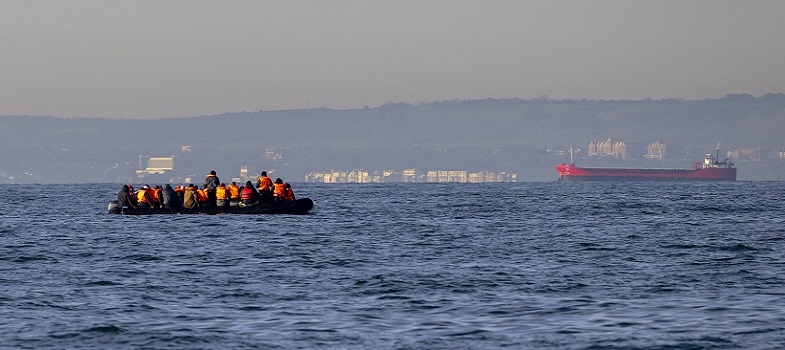3.1 The right to leave a country, and the right to seek and enjoy asylum
The right to leave a country, including one’s own, is enshrined in most human rights conventions – meaning that there are many international sources of law which specify this right. For example, it is provided in Article 12 of the International Covenant on Civil and Political Rights 1966 (ICCPR):
‘2. Everyone shall be free to leave any country, including his own.
3. The above-mentioned right[s] shall not be subject to any restrictions except those which are provided by law, are necessary to protect national security, public order, public health or morals or the rights and freedoms of others, and are consistent with the other rights recognized in the present Covenant.
4. No one shall be arbitrarily deprived of the right to enter his own country.’
A similarly worded human rights provision is provided under Article 2 of Protocol No. 4 of the European Convention on Human Rights (ECHR), and other examples can be found across human rights law. As Article 12 of ICCPR suggests, it is a right which is qualified, meaning that states can limit or interfere with this right. They can do this ‘to protect national security, public order, public health or morals or the rights and freedoms of others’.
However, any restrictions should not impair the essence of the right, they should be necessary for the purposes they seek to achieve, and they should be proportionate to their aims (Human Rights Committee, General Comment 27, Freedom of movement (Art.12), U.N. Doc CCPR/C/21/Rev.1/Add.9 (1999)). In practice, this means that there may be some instances where states can restrict the right to free movement, but depending on the practice it may be deemed to be illegal. States restricting movement may therefore be open to legal challenge.
The right to seek and enjoy asylum is also embedded within international law. Under the Universal Declaration of Human Rights (UDHR) 1948, Article 14.1, ‘Everyone has the right to seek and to enjoy in other countries asylum from persecution’.
Although the UDHR is not a direct source of law, the rights of those seeking asylum were given legal standing under the UN Convention relating to the Status of Refugees 1951 and its 1967 Protocol (Refugee Convention). People are recognised as refugees under the Refugee Convention if deemed to be:
‘[a] person who owing to a well-founded fear of being persecuted for reasons of race, religion, nationality, membership of a particular social group or political opinion, is outside the country of his nationality and is unable or, owing to such fear, is unwilling to avail himself of the protection of that country; or who, not having a nationality and being outside the country of his former habitual residence as a result of such events, is unable or, owing to such fear, is unwilling to return to it’.
The protection which is provided for refugees is that they will not be sent back to the country from where they are seeking safety. This is called the principle of non-refoulement, and it is provided under Article 33 of the Convention. This applies not only to recognised refugees, but also to those who have not had their status formally declared (e.g., asylum claimants).
This has been reaffirmed by the Executive Committee of UNHCR. In its Conclusion No. 6 (XXVIII) ‘Non-refoulement’ (1977), para. (c), ‘the fundamental importance of the principle of non-refoulement … of persons who may be subjected to persecution if returned to their country of origin irrespective of whether or not they have been formally recognized as refugees’.
When people are at sea, they are also protected by human rights law. The next activity will consider applicable human rights law to people at sea.
Activity 2: What human rights instruments do you think relate to the rescue of people at sea?
Have a think about what you know (or believe you know) about human rights. What international legal instruments do you know of, and what sort of rights do they confer on people? How do you think these rights translate to the rights of people at sea?
Discussion
There are a vast number of instruments applicable to the rights of people at sea. For instance, the Universal Declaration of Human Rights (UDHR), which forms the basis of a range of international, regional, and national human rights laws, sets out the right to life (Art 3), the right that no one shall be subjected to torture or to cruel, inhuman or degrading treatment or punishment (Art 5), the right not to be arbitrarily arrested and detained (Art 9), and the right to seek asylum (Art 14).
The Refugee Convention, as stated above, sets out the right to non-refoulement – that is, it is an obligation on states not to send a person back to a place where their human rights are at risk (Art 33(1)).
The non-governmental organisation (NGO) Human Rights at Sea (HRAS) has developed the Geneva Declaration on Human Rights at Sea. This seeks to reaffirm the existence of various human rights instruments and rights and obligations within them and offers a useful resource to set out in clear terms the volume and coverage of human rights obligations at sea (HRAS, 2022).
3 The rights of migrants to leave their country and when at sea

